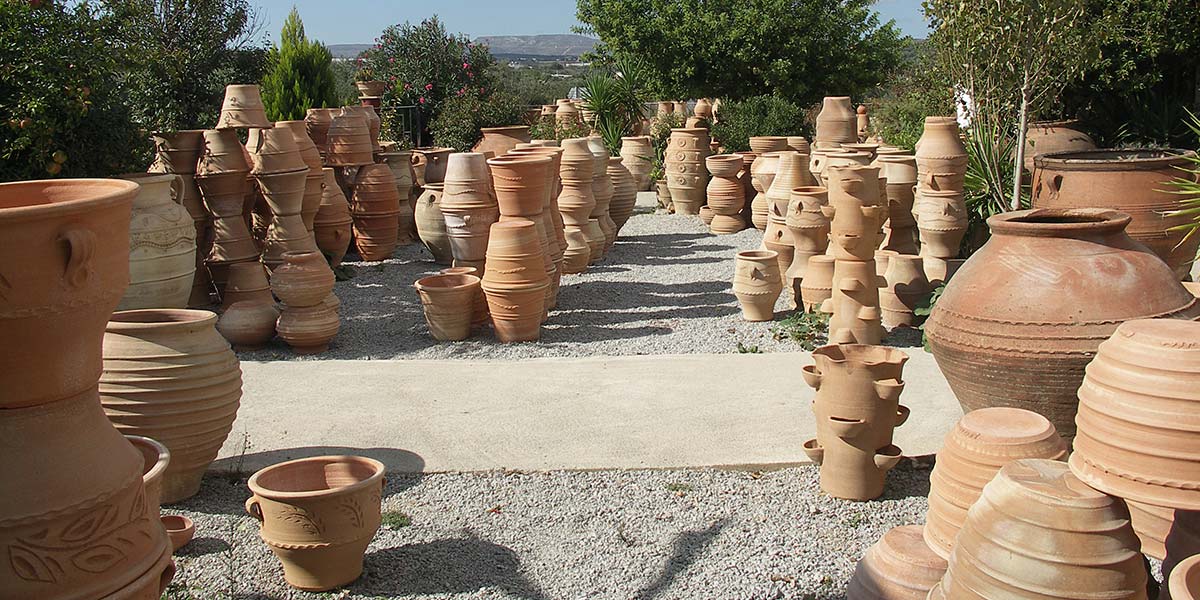Crete, an island known for its rich cultural heritage and vibrant history, has long been a center of artistic expression, particularly in the realm of pottery. The art of pottery in Crete dates back to the Minoan civilization, which flourished from around 2600 to 1100 BCE. This ancient tradition has not only survived but thrived through the centuries, evolving into a significant cultural and educational activity. Today, Cretan pottery painting workshops offer a unique opportunity for both locals and tourists to engage with this ancient craft, experiencing firsthand the artistic processes and techniques that have been passed down through generations.
Historical Context of Cretan Pottery
Cretan pottery is renowned for its distinctive styles and intricate designs, which reflect the island’s historical and cultural influences. The Minoans were the pioneers of this craft, creating exquisite pottery that was both functional and decorative. Their pottery featured naturalistic designs, including marine life, plants, and abstract motifs, painted with vibrant colors derived from natural pigments.
Following the Minoan period, Cretan pottery continued to develop, incorporating elements from Mycenaean, Geometric, and Classical Greek styles. Each era added new dimensions to the craft, leading to the diverse range of pottery techniques and styles seen today. Contemporary Cretan pottery often draws inspiration from these historical styles, blending traditional motifs with modern aesthetics.
The Significance of Pottery Painting Workshops
Pottery painting workshops in Crete serve multiple purposes: they are a means of preserving cultural heritage, fostering artistic expression, and promoting tourism. These workshops are typically conducted by skilled artisans who have mastered the traditional techniques and are passionate about sharing their knowledge.
Participants in these workshops have the opportunity to learn about the entire pottery-making process, from shaping the clay to the final stages of painting and glazing. The hands-on experience allows them to connect with the craft on a deeper level, appreciating the skill and creativity involved in creating each piece.
Structure of a Pottery Painting Workshop
A typical Cretan pottery painting workshop is structured to provide a comprehensive learning experience. Workshops usually begin with an introduction to the history and significance of Cretan pottery. Participants are then guided through the process of creating their own pieces, starting with the basics of clay preparation and shaping.
The painting stage is often the most anticipated part of the workshop. Participants are introduced to traditional Cretan motifs and techniques, learning how to apply designs using various tools and brushes. They experiment with different colors and patterns, creating unique, personalized pieces.
In addition to the practical aspects, workshops often include discussions on the cultural context of pottery in Crete, exploring how historical events and societal changes have influenced the art form. This holistic approach not only enhances the participants’ technical skills but also deepens their understanding of the cultural significance of their creations.
Cultural and Educational Impact
Pottery painting workshops have a significant cultural and educational impact. They play a crucial role in preserving traditional crafts, ensuring that the knowledge and skills associated with Cretan pottery are passed down to future generations. By engaging with these workshops, participants contribute to the continuation of a valuable cultural heritage.
From an educational perspective, these workshops offer a unique form of experiential learning. Participants gain practical skills in pottery making and painting, while also learning about the historical and cultural contexts of the art form. This combination of hands-on practice and theoretical knowledge creates a well-rounded educational experience.
Tourism and Economic Benefits
Pottery painting workshops also have substantial tourism and economic benefits. They attract visitors interested in cultural and artistic experiences, contributing to the local economy. Workshops often collaborate with local businesses, such as galleries and souvenir shops, providing a platform for artisans to sell their work and promoting Cretan pottery to a broader audience.
Tourists who participate in these workshops often leave with a deeper appreciation for Cretan culture and a tangible reminder of their experience. This not only enhances their travel experience but also fosters cultural exchange and understanding.
Conclusion
Cretan pottery painting workshops are a testament to the enduring legacy of an ancient art form. They offer a unique opportunity for individuals to engage with a rich cultural tradition, learning from skilled artisans and creating their own pieces of art. Through these workshops, the art of Cretan pottery continues to thrive, bridging the past and present while fostering cultural preservation, education, and tourism. In a world where traditional crafts are often at risk of being lost, these workshops play a vital role in keeping the spirit of Cretan pottery alive for future generations.


